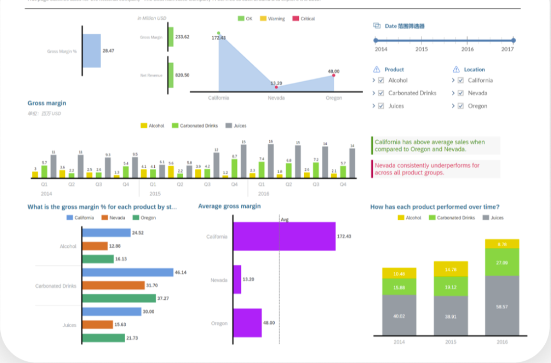What is Financial Services Compliance Software?
Financial services compliance software is a type of software designed to help financial institutions comply with legal, regulatory, and internal standards and processes. This software is crucial for managing the complexity and volume of compliance tasks within banks, insurance companies, investment firms, and other financial entities.
Financial Services Compliance Software Features
How to Use the Financial Services Compliance Software:
1. Choose the Right Software
- Identify Needs: Evaluate your organization's specific compliance needs—such as regulatory reporting, risk management, or fraud detection—to select a software that best addresses those needs.
- Vendor Selection: Research and compare different vendors based on their features, integration capabilities, customer support, and user reviews.
2. Implement the Software
- Setup and Installation: Work with the vendor to install the software on your organization’s network. This may involve on-premises installations or cloud setups.
- Integration: Integrate the software with existing systems (like customer databases, transaction monitoring systems, and other operational software) to ensure seamless data flow and functionality.
3. Configure the System
- Customization: Customize the settings to match your specific regulatory requirements and business operations. This includes setting up rules for risk assessments, compliance checks, reporting structures, and alerts.
- Data Input: Input necessary compliance and operational data into the system, such as regulatory frameworks you’re subject to, risk parameters, employee information, and past compliance records.
4. Train Your Team
- Comprehensive Training: Conduct training sessions for all relevant employees to ensure they understand how to use the software effectively. This includes training on how to interpret alerts, generate reports, and maintain compliance records.
- Ongoing Support: Establish a support system with the software vendor for troubleshooting and regular updates on software use.
5. Monitor and Manage Compliance
- Regular Audits: Use the software to conduct regular audits of your compliance status to ensure rules and regulations are being followed.
- Stay Updated: Regularly update the software to incorporate changes in compliance laws and regulations. This often involves working closely with the software vendor for updates and patches.
6. Review and Improve
- Feedback Loop: Establish a feedback loop with users to identify challenges and areas for improvement in the software’s use.
- Performance Reviews: Regularly review the software’s performance and the compliance status it reports. Use insights from reports and analytics to improve business processes and compliance practices.
7. Reporting and Documentation
- Automate Reporting: Utilize the software's capabilities to automate and streamline reporting processes for regulatory bodies.
- Documentation: Maintain detailed documentation of all compliance activities facilitated by the software to aid in audits and internal reviews.
Financial Services Compliance Software is Designed For:
What's Next?
Learn how our software can safeguard your operations against compliance risks. Book a demo with our experts today.







